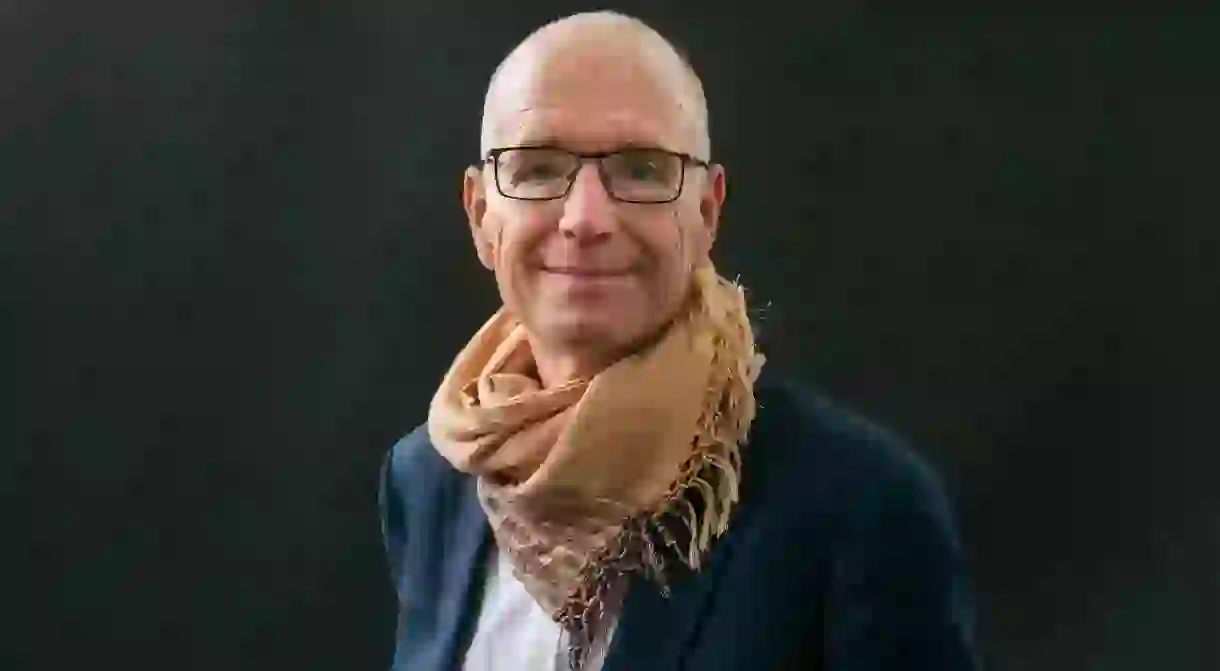Author Rory MacLean On Discovering (and Questioning) Communist History in Eastern Europe

Ahead of the release of his book Pravda Ha Ha: True Travels to the End of Europe, historian and travel writer Rory MacLean spoke to Culture Trip about why Eastern Europe should be on any history enthusiast’s radar and shared his top picks for a road trip through the region.
“It was a period of such optimism, hope and promise … and it just filled me with joy, this idea of a brave, new, united Europe,” MacLean says of his time in Berlin in November 1989, at the fall of the Berlin Wall. At this pivotal historical moment, he made the journey from Berlin to Moscow, via East Germany, Czechoslovakia, Hungary, Poland and Romania. MacLean’s book Pravda Ha Ha: True Travels to the End of Europe saw him embark on this journey once again – but this time in reverse, starting in Moscow.


The best-selling author, whose most popular books include Stalin’s Nose, Magic Bus and Berlin: Imagine a City, has long sought to foster interest in the region formerly behind the Iron Curtain and, moreover, a sense of connection between the reader and the individuals he features. “My ambition has always been to evoke empathy, to build bridges. I want to be a conduit between the places I visit and the reader. I ask the reader not to look at me but with me,” he tells Culture Trip. MacLean hopes that his work will inspire more people to visit the region themselves – particularly at a moment when, across Europe, the “pendulum is again swinging” in favour of populism, disinformation and intolerance. With this in mind, he encourages visitors to inform themselves first and, crucially, “question the stories they’re being told”.
According to MacLean, Berlin provides a great accessible entry point into exploring Central and Eastern Europe’s 20th-century history. “Of course it’s the best party scene in Europe, but it’s so much more than that,” the author says. “The Germans have been remarkable at, almost in a Freudian way, examining the evil in their past. There is the Holocaust Memorial, the Jewish Museum and the Stasi Museum. It’s a place where history is so present.”

From here, he recommends heading into the Czech Republic – “I love Prague, but it’s crawling with tourists; go to Brno instead, for the Moravian joie de vivre and fantastic fizzy wine” – or to Kraków or Gdańsk in Poland. In Gdańsk, MacLean highlights the Museum of the Second World War. After opening in 2017, and facing accusations by the ruling right-wing Law and Justice Party of being “universalistic” and not patriotic enough, the museum swiftly came under new management. “It was a magnificent museum to the Second World War, looking at the universal suffering,” MacLean reflects. “Now the director has been removed and they have started foisting nationalistic narratives onto the exhibits.”

A necessary scepticism about nationalistic narratives is a common theme on MacLean’s suggested itinerary. Since opening in 2002, Budapest’s House of Terror Museum has become one of the Hungarian capital’s most popular attractions. MacLean argues that this museum, dedicated to exploring the Fascist and Communist regimes of 20th-century Hungary, espouses a vision of history in which Hungary is the perennial victim and has been “threatened throughout its history by outside forces: Nazi Berlin, Communism (Moscow) and now Brussels”. People must see this “visually stunning” and “emotionally powerful museum”, he says, but “realise that it is propaganda”.
Moving east to Ukraine, Kiev and Odessa – the latter famed for the Potemkin Steps, as seen in the legendary massacre scene in Sergei Eisenstein’s 1925 classic Battleship Potemkin – are definitely worth a visit, but the author particularly encourages anyone interested in Soviet history to make the trip to St Petersburg and Moscow. In the former, MacLean’s top picks include the Museum of Soviet Arcade Machines, where visitors can “drop a 15-kopek coin into a slot to launch torpedoes at enemy ships and shoot toy shotguns at flickering targets”; the Monument to Victims of Political Repression on the Voskresenskaya Embankment; and the work of the ‘Last Address’ initiative. Founded in 2014, the project commemorates Russian citizens sent to Stalin-era forced-labour camps by placing small plaques on the buildings where they lived before being apprehended. As MacLean notes in Pravda Ha Ha, significant plaques can be found at the Fountain House, Pushkinskaya ulitsa 19 and Fontanka Embankment 129, as well as on Bolshaya Pushkarskaya.

As for Moscow, high on the list should be VDNKh – a mammoth Stalin-era exhibition park in the north of the city, featuring a network of pavilions designed to glorify the achievements of the Soviet Union, a replica of the Vostok rocket and the Neoclassical Fountain of the Friendship of Peoples. Unmissable here though, MacLean believes, is the Russia – My History museum in Pavilion 57, which presents an engaging if not necessarily objective take on history. “VDNKh is so magnificent because it is, in a way, preserved in aspic – that moment in history, the Stalinist lie,” he suggests. By contrast, the State Historical Museum on Red Square – whose exhibitions span pre-history to contemporary Russia – is fascinating and a must-visit not least because it has been “revised again and again”. Visitors should go in “with the foreknowledge that it was totally different when Brezhnev was in power, when Gorbachev was in power and in the 1990s,” MacLean advises.


Rory MacLean’s Pravda Ha Ha: True Travels to the End of Europe was published on 1 November 2019 by Bloomsbury Publishing.













